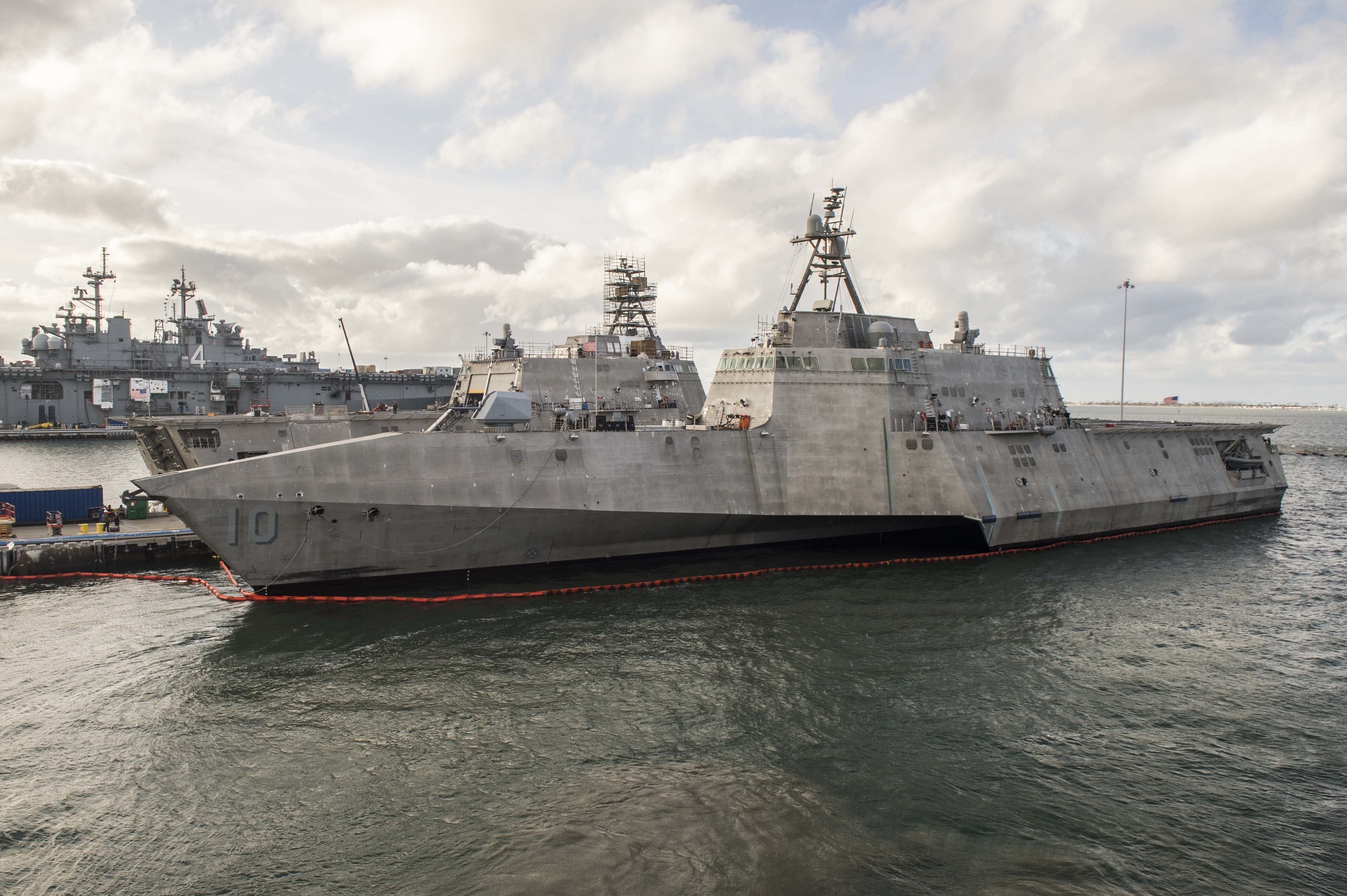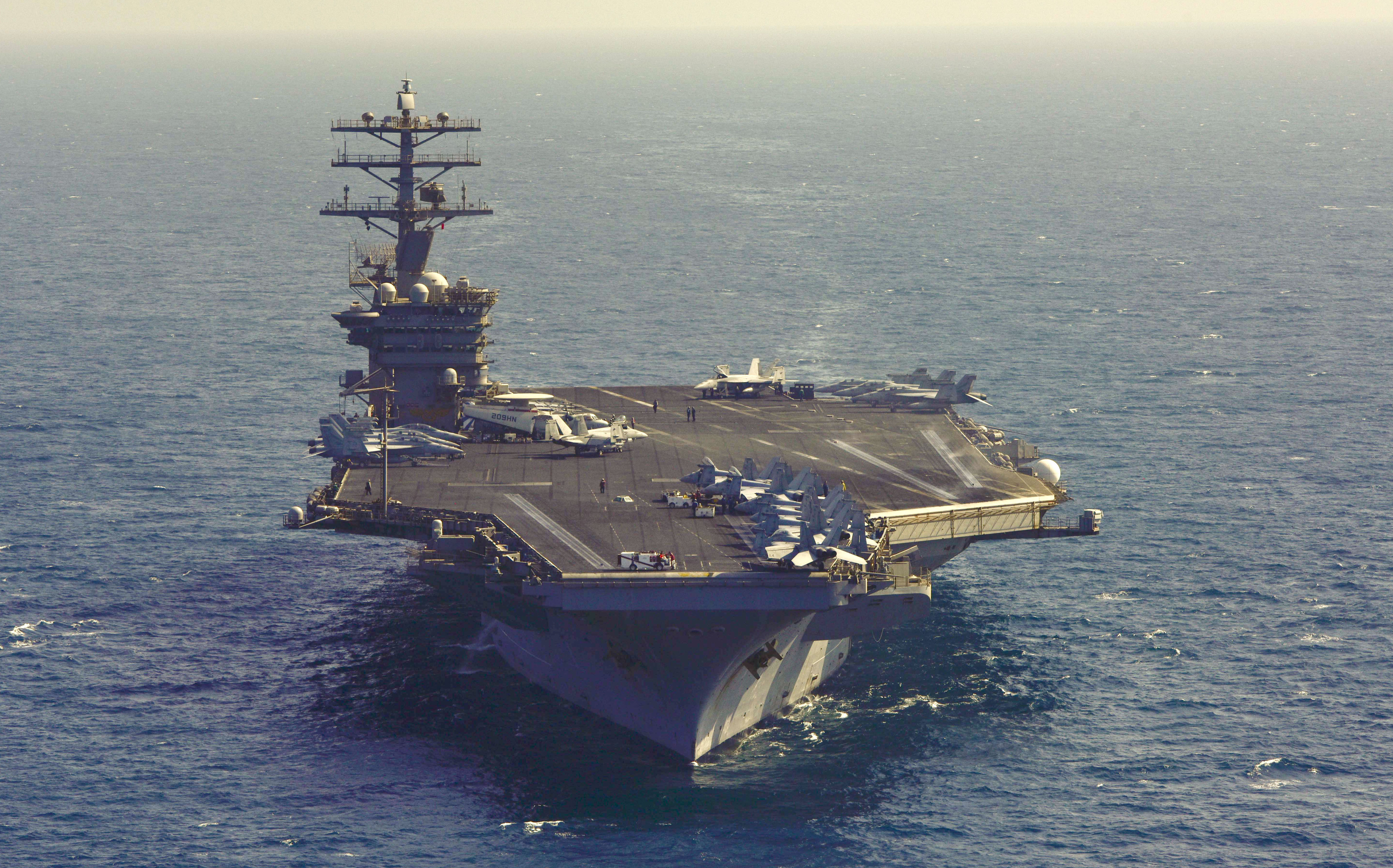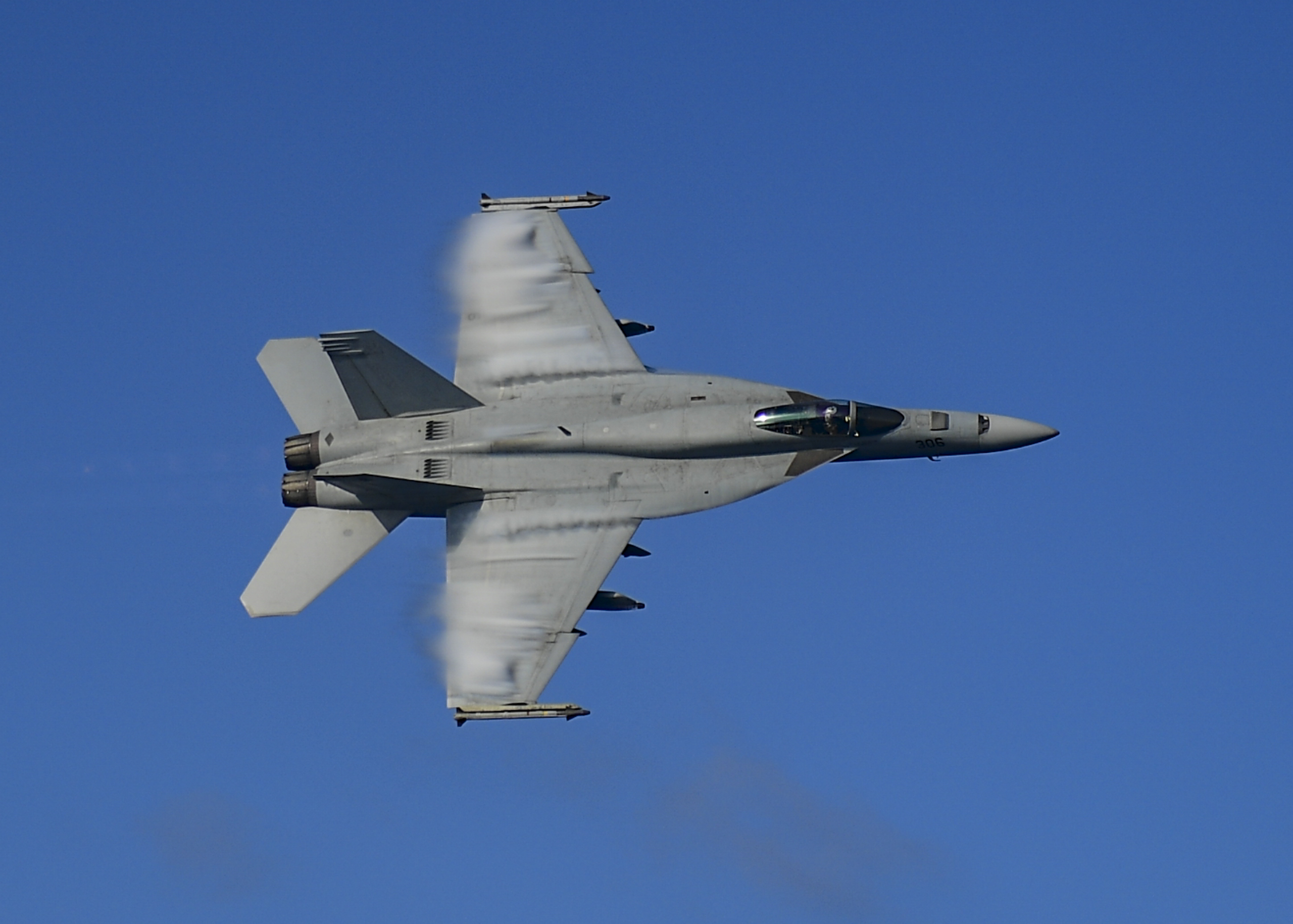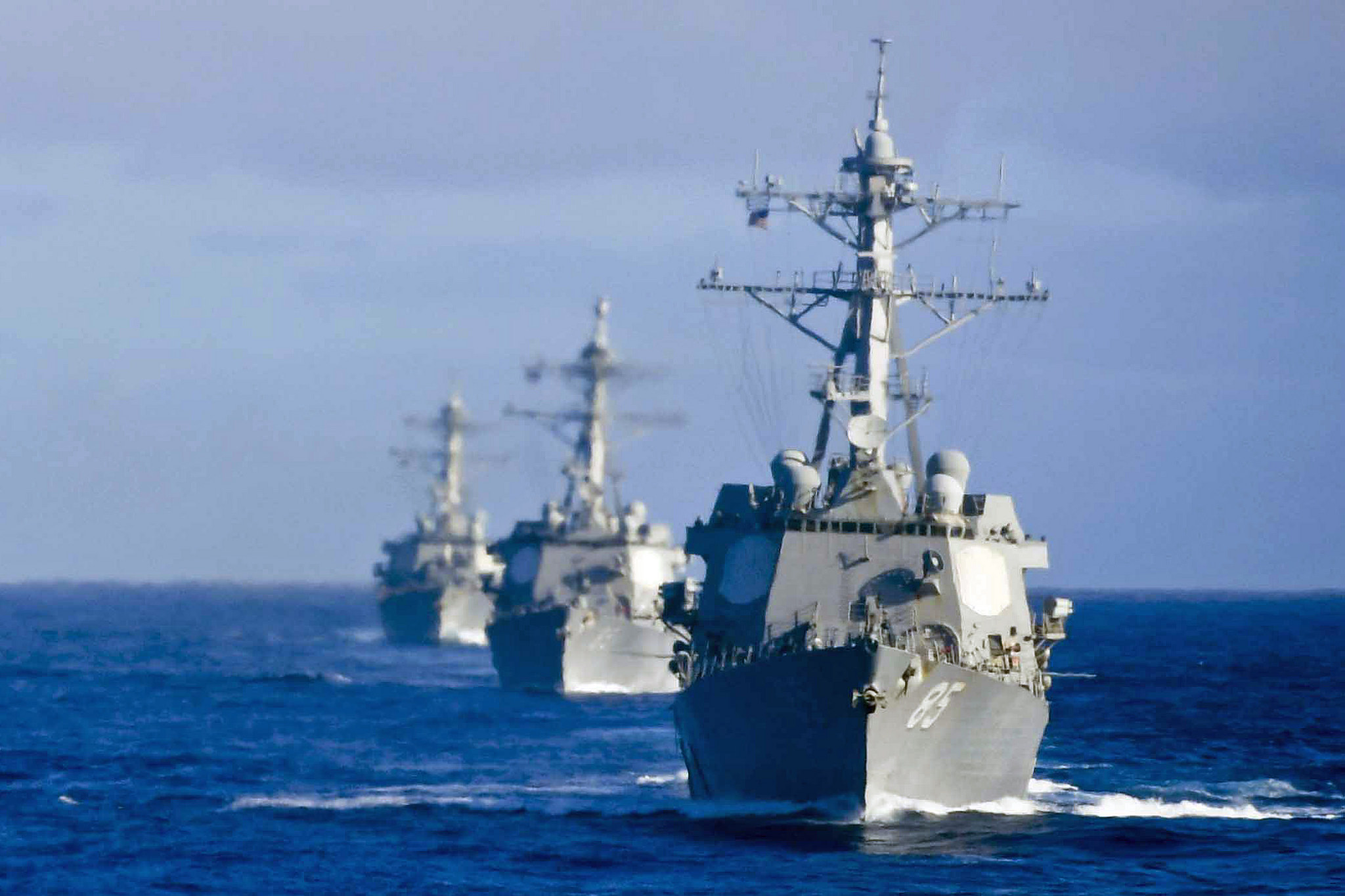
CAPITOL HILL – The House Armed Services Committee released sections of its Fiscal Year 2019 National Defense Authorization Act, which recommends buying 13 ships and beginning a handful of aircraft multiyear procurement contracts.
Seapower and Projection Forces Subcommittee
The bill would authorize the 10 ships the Navy requested in its FY 2019 budget requests, and the seapower and projection forces subcommittee recommends adding an additional two Littoral Combat Ships – for a total of three, to meet industry needs – and the procurement of aircraft carrier CVN-81 to support a two-ship block buy. Whether the full committee accepts those recommendations won’t be known for two more weeks, just prior to the May 9 full committee NDAA markup session.
A committee staffer said HASC determined the Navy’s one-LCS request was “damaging to the two construction yards” – the Navy had previously said it needed to buy three a year to maintain shipyard efficiencies and to keep both Austal USA and Fincantieri’s Marinette Marine healthy ahead of the frigate competition next year – and so the subcommittee recommended the full committee include funding for three ships. That would put the Navy at 35 LCSs total, compared to its stated need of 32, but the staffer said the move was meant to ensure the Navy had a good price point for the FY 2019 LCSs and, if either LCS builder is chosen to build the frigate, to allow for a healthy production line going into the new ship program.
On the aircraft carriers, authorizing CVN-81 in 2019 would basically shift the ship up two years, putting it just three years behind the future Enterprise (CVN-80) instead of the now-standard five years. The Navy and Newport News Shipbuilding are working now to finesse the cost-savings estimate for buying CVN-80 and 81 components together, though Newport News has said its portion of the carrier alone could see $1.6 billion in savings, and the Navy has said overall savings – including the purchase of government-furnished equipment – could approach $2.5 billion. By formally authorizing CVN-81 in 2019, the staffer said that would allow the Navy to buy the longest-lead material – the nuclear reactor – in time for an early delivery and then time other components as needed to achieve savings.

Additionally, the seapower subcommittee noted concerns that the Navy’s carrier force would hit the required 12 carriers for part of FY 2023 but then drop back down to 11 later that year when USS Nimitz (CVN-68) retires. Though carriers are challenged to operate beyond their planned 50-year service life due to relying on nuclear reactor cores for power, the staffer said HASC wants the Navy to take a close look at the remaining fuel in Nimitz’s reactor and see if there’s any way to get beyond 50 years from the ship.
On Virginia-class attack submarines, the fate of a potential third ship in FY 2020 is still undecided, but the seapower subcommittee recommends taking actions to allow for a third ship in 2022 and 2023.
The FY 2018 NDAA authorized the Navy to buy up to 13 SSNs in a multiyear procurement contract currently being negotiated with General Dynamics Electric Boat and Newport News that would cover fiscal years 2019 through 2023. The Navy planned to buy the boats at a rate of two a year, but lawmakers wanted to preserve the opportunity to insert additional ships in up to three years, as industry is able to without adding risk to the top-priority Columbia-class SSBN.
The committee staffer said that, if the 2022 and 2023 boats were added, Electric Boat would do whatever is needed to protect the Columbia program and to put all the additional risk on these two SSNs, meaning they could potentially have longer delivery timelines. Newer employees may be put on the SSNs and resources may be rerouted to support Columbia, the staffer said.

The decision to pursue these additional SSNs despite the heavy workload the yards already face is a sign of the great importance of SSNs in the fleet. The staffer said the Navy has 52 attack subs today and was headed towards a decline downto just 41 by 2028 – a 20-percent reduction. The staffer said the committee did its best to balance the Columbia program’s ability to stay on time and on budget with the Navy’s and combatant commanders’ needs for more attack subs.
On the upcoming frigate program, which will follow the LCS and fill the small surface combatant requirement starting in FY 2020, the subcommittee would require the Navy to ensure it has the technical data rights for whichever design it picks – five companies are participating in a design maturation effort now and are expected to compete for the detail design and construction contract in 2020 – so that ultimately the Navy could conduct a full and open competition for the ship after the first 10 frigates are built.
A staffer explained that the committee wasn’t trying to force the Navy’s hand, especially since the Navy has not yet released an acquisition strategy for the frigate. However, the second staffer said the two LCS designs were largely proprietary, whereas the Navy owned the technical data rights to the Arleigh Burke-class destroyers, which were designed by one yard and now built by two others. Given the fragility of the shipbuilding industrial base now, the staffer said it was important for the Navy to own the design so it could recompete the ship down the line or add a second builder as needed to meet its needs and that of the industrial base.
The seapower section of the bill also pays special attention to the ready reserve force and other strategic sealift assets that often receive less attention and less funding. The ready reserve force is currently made up of 46 ships that average more than 40 years old – with some of them being steam-powered ships. The 2018 NDAA authorized the Navy to buy two used vessels to start to recapitalize that force, but the Navy isn’t planning on doing so until 2021 and 2022, the staffer said. So this year’s bill includes authorization to buy eight more used ships, a requirement to build 10 new ships, and a limitation on Military Sealift Command funding until the Navy signs a contract for last year’s two ships and begins drafting the requirements for a Common Hull Multimission Platform (called Champ) – though the 10 new ships don’t necessarily have to use the Champ hull design.
The bill also prevents the Navy from retiring hospital ship USNS Comfort (T-AH-20) until a sufficient replacement is in place, though not necessarily a one-for-one replacement with a large hospital ship.
And the bill would provide the Maritime Administration authorization to buy a second new training ship, though it would prevent MARAD from buying a used ship for training purposes, as MARAD had originally planned to do. The first training ship was recently funded in the 2018 spending bill, which was just passed by lawmakers this spring after an extended continuing resolution at the beginning of FY 2018.
The seapower subcommittee’s section of the bill would also allow for multiyear procurement contracts for the C-130J transport airplane, the E-2D Advanced Hawkeye airborne early warning and command and control plane, and the Standard Missile-6 weapon system.

Tactical Air and Land Forces Subcommittee
The Tactical Air and Land Forces subcommittee mark included language that authorizes a multi-year buy of F/A-18E/F Super Hornets to support Navy plans to continue buying the aircraft into the next decade despite previously having planned to end procurement and potentially close the Boeing production line.
The Pentagon’s budget request includes $19 billion total for Navy and Marine Corps aircraft that included 24 Super Hornets, and the recently passed FY 2018 omnibus included $1.8 billion for 24 Super Hornets.
The TACAIR mark also includes several provisions related to the ongoing physiological episode challenges that have plagued both the Navy and Air Force. Those include adding a series of equipment to new Super Hornets cockpit altimeter, upgrading to a new onboard generation system (OBOGs), installing a cockpit altimeter and the install automatic ground collision avoidance system.
The mark also included provisions for an annual report from the Secretary of the Navy on the status of Super Hornet upgrades starting in 2019.
Readiness Subcommittee
The readiness subcommittee added several provisions meant to address last year’s four surface navy collisions and to respond to the two reviews the Navy conducted in the aftermath.
First, the bill seeks to maximize the amount of time a ship and its crew are available to focus on training through several means: it asks the Government Accountability Office to study how to get ships through maintenance more efficiently; it asks the Navy to “provide a report on optimizing surface navy vessel inspections and crew certifications to reduce redundancies and the burden of inspection type visits that ships undergo;” and it would alter the current practice of “studying for the test” ahead of Board of Inspection and Survey (INSURV) inspections and instead encourage year-round readiness by eliminating scheduled INSURV visits and instead conducting no-notice inspections.
The committee wrote in the readiness mark that “following the collisions involving U.S. Navy ships in the western Pacific, the Navy conducted a comprehensive review of recent surface force incidents. The committee also notes that the Navy’s ‘Comprehensive Review of Recent Surface Force Incidents’ identified an overabundance of inspections, certifications, and that ‘ships can be subjected to as many as 238 separate inspection, certification, and assist visits in a 36 month period.’ The Navy’s ‘Strategic Readiness Review’ of these incidents further identified that there ‘has been a dramatic increase in the operating tempo of individual ships, and accompanying reductions in the time available to perform maintenance, training, and readiness certification.’ The ‘Strategic Readiness Review’ went on to note that ‘sufficient time for training crews and maintaining ships is critical for restoring and monitoring readiness.’”

A staffer said the committee is looking for fewer inspections and more time to train, and another staffer said the no-notice inspection method would force ships and battle groups to keep their material readiness and warfighting proficiency up at all times.
The bill also goes after the surface navy incidents through the lens of accountability. The reviews found a complex chain of command and offices whose responsibilities created conflicts of interest – U.S. 7th Fleet both certifying the readiness of ships and also consuming that readiness by directing operations, for example.
The bill would “require the Secretary of the Navy to designate a single commander within the Department of the Navy responsible for ensuring Navy forces are available for tasking and deployment, including those Navy forces that may be operating from a forward deployed location. This section would also require the Secretary to designate a single commander for all Navy shipyards, including any located overseas. … The committee encourages the Secretary to consider designating the Commander, Fleet Forces Command, as the responsible commander for tasking and deployment, as that official performs that function now for all naval forces excepting the Pacific Fleet. The committee notes that the Commander, Naval Sea Systems Command, has the overall responsibility within the Department of the Navy for scheduling and maintaining Navy vessels in public and private shipyards, with the exception of the U.S. Naval Ship Repair Facility and Japan Regional Maintenance Center. The committee encourages the Secretary to consider designating the Commander, Naval Sea Systems Command, as the single commander of naval shipyards, including the facility located in Japan.”
The recommendation to put U.S. Fleet Forces Command in charge of all force generation goes against the “Inouye Amendment” that for years has sought to keep U.S. Pacific Fleet in charge of its own readiness generation and employment. A committee staffer said HASC is working with the appropriators to come to an agreement, since it is the annual spending bills that have continued to include the Inouye Amendment every year and could supersede what HASC is trying to do with this item.
Additionally, the bill would codify that no Navy ship be allowed to remain forward-deployed to a homeport outside of the United States for more than 10 years – which is already the Navy policy but has not been strictly enforced. For ships currently forward-deployed that have been abroad for more than 10 years, the Navy would have three years to bring them to a U.S. homeport.
A committee staffer said that more than half the Navy’s forward-deployed ships have been abroad more than 10 years. USNI News understands that in the Forward Deployed Naval Force in Japan alone, six ships have exceeded the 10-year mark, with destroyer USS Curtis Wilbur (DDG-54) having served from Japan since 1995. USS John S. McCain (DDG-56), which was involved in a fatal collision last year and is now undergoing repairs in Singapore, had operated in Japan since 1997. Cruiser USS Shiloh (CG-67) and destroyers USS Stethem (DDG-63), USS Mustin (DDG-89) and USS McCampbell (DDG-85) all arrived in Japan between 2005 and 2007.
Sam LaGrone contributed to this report.





